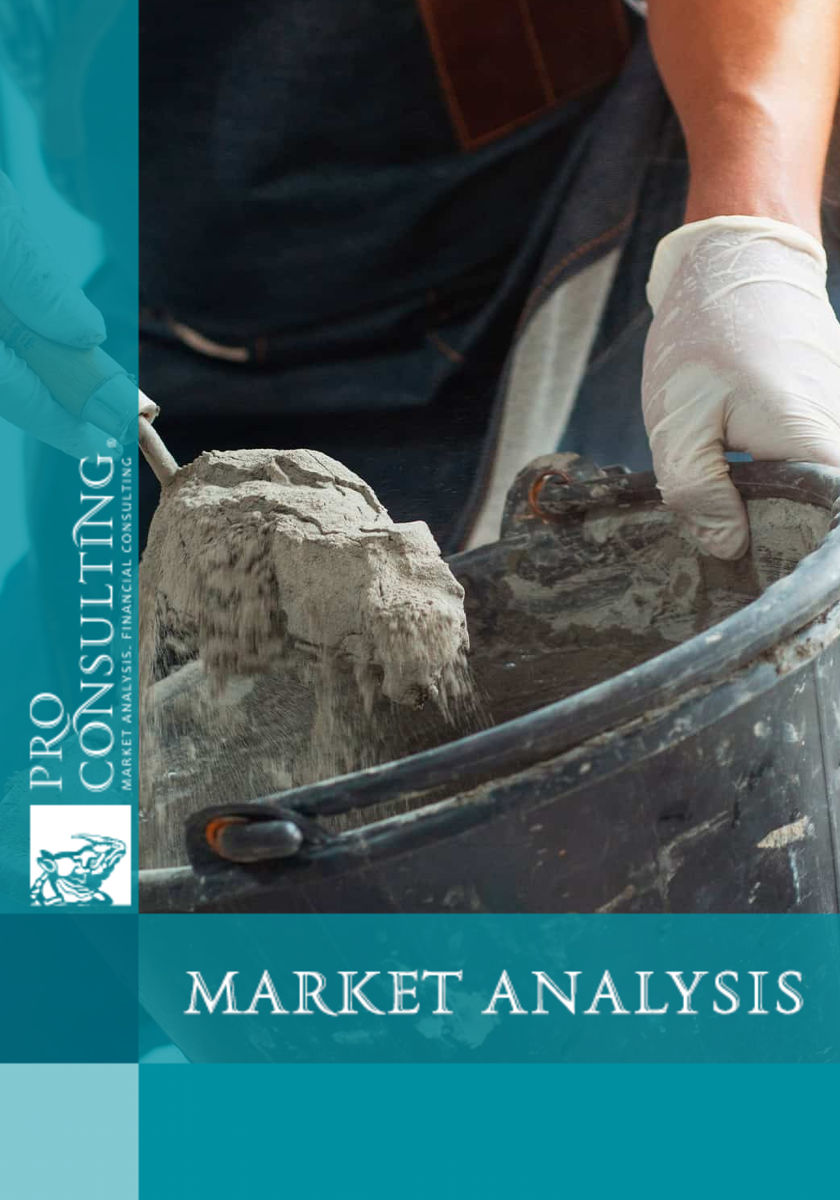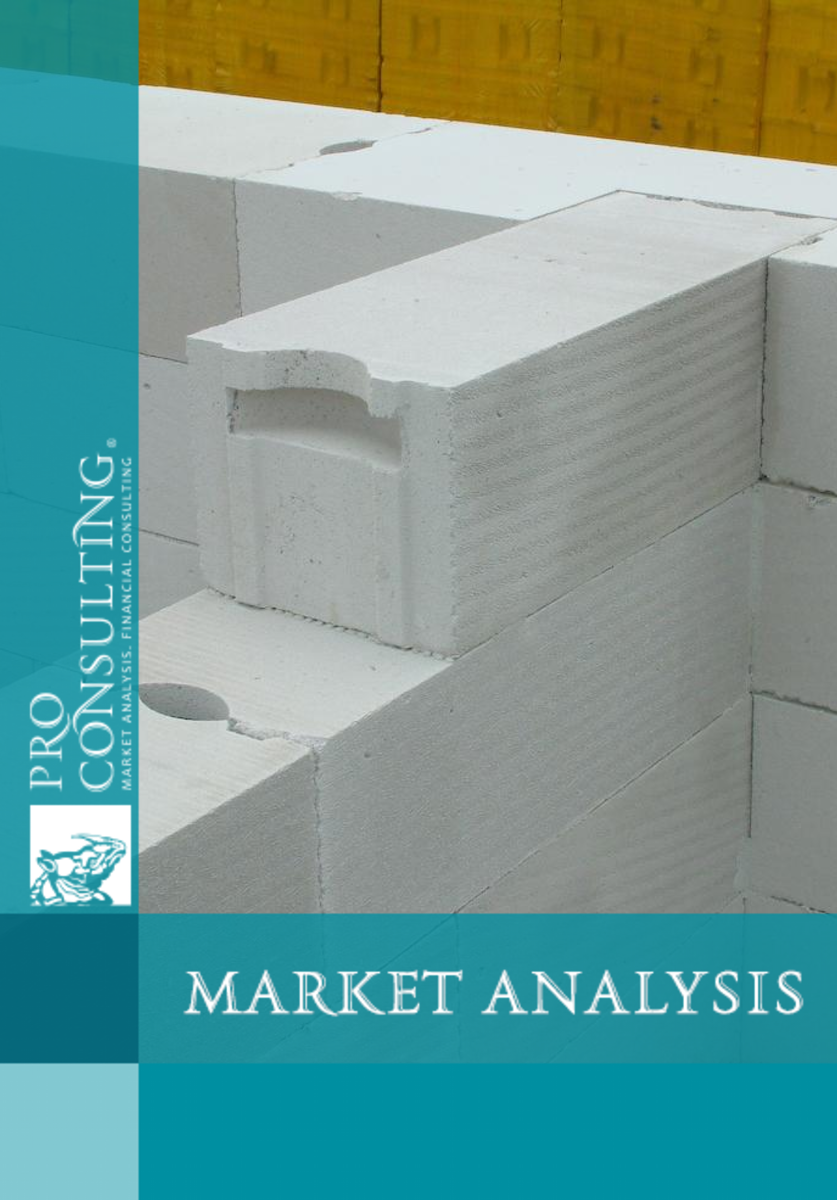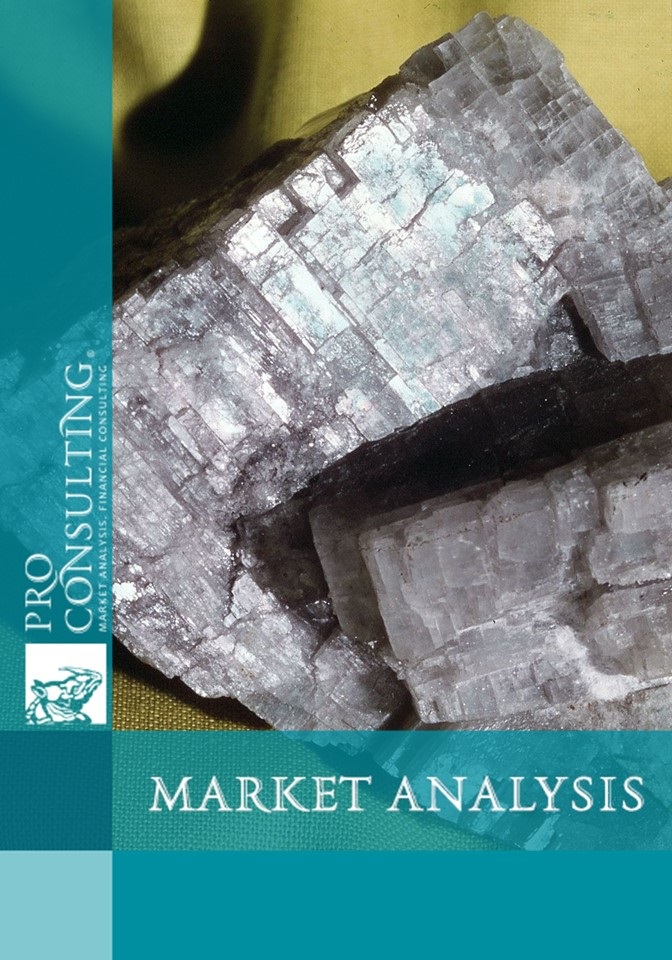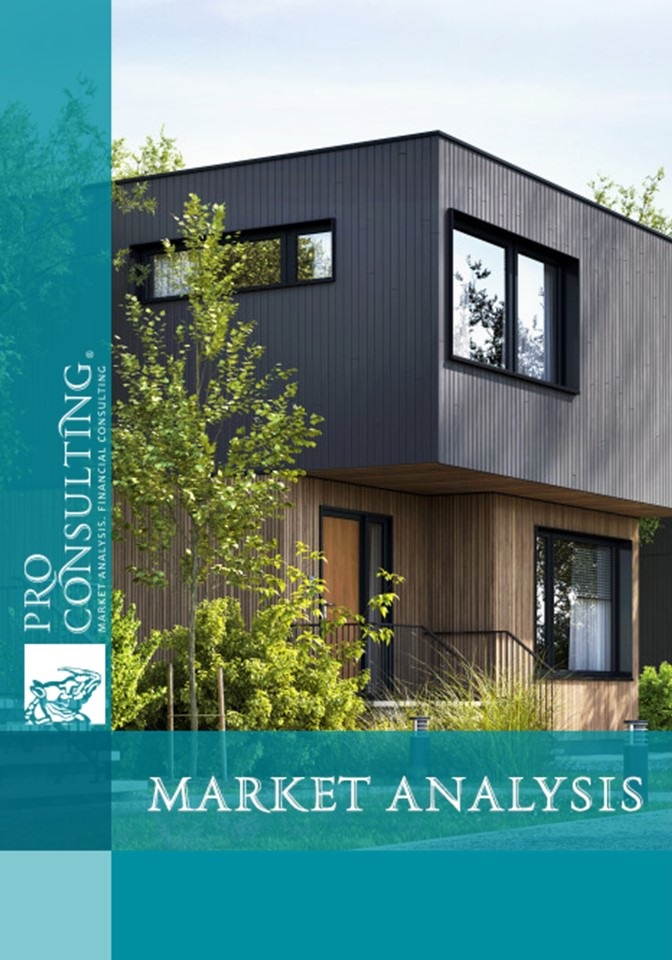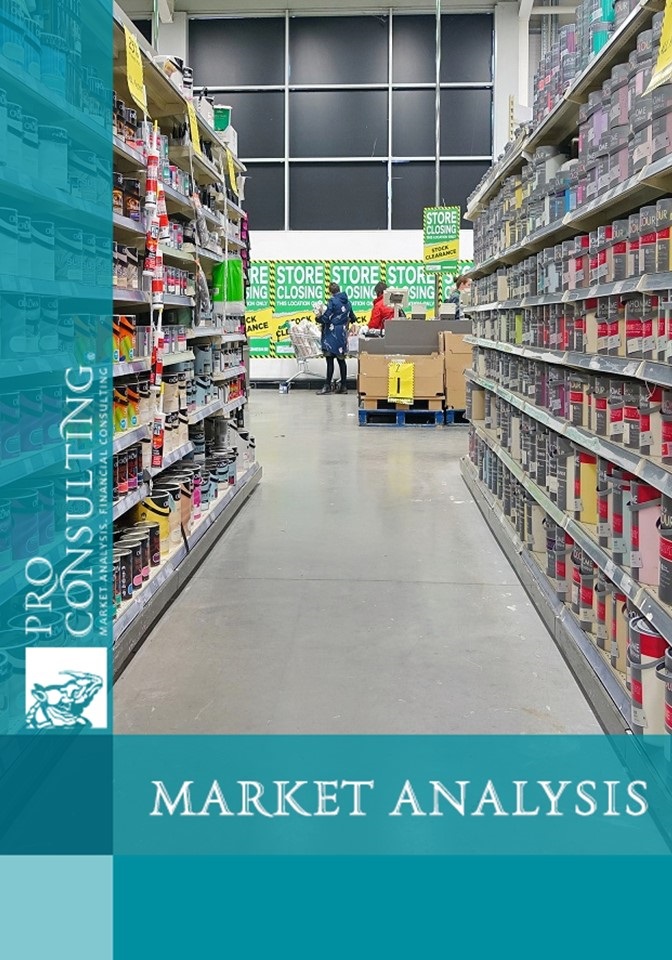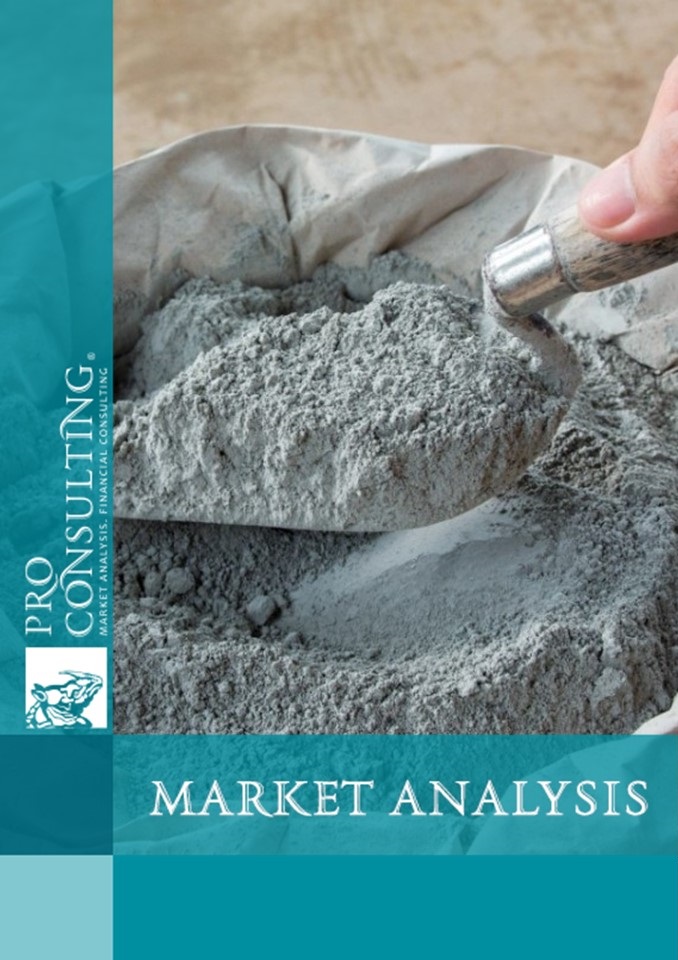Market research report on fiberglass concrete and its analogues in Ukraine. 2022 year
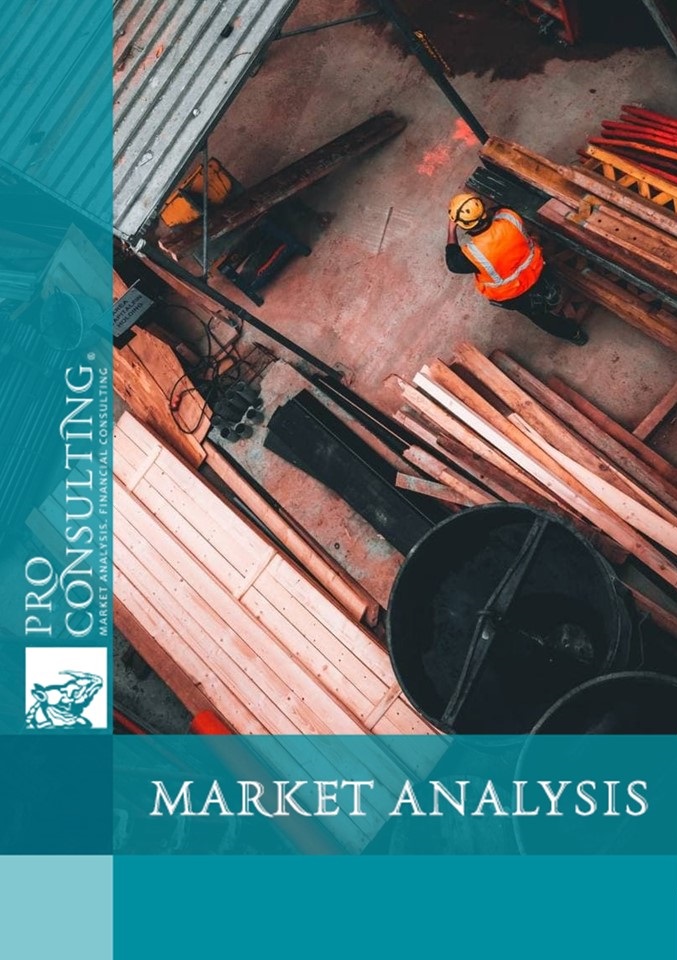
| Date of Preparation: | January 2022 year |
| Number of pages: | 81, Arial, 1 interval, 10 pins |
| Graphs and charts: | 48 |
| Tables: | 25 |
| Payment method: | prepayment |
| Production method: | e-mail or courier electronically or in printed form |
| Report language: | ukrainian, russian, english |
- This report can be updated and customized based on your business goals; you can also purchase part of report (no less than 50%) at a more affordable price
- Failed to find your market research report? - contact us
- You can also order feasibility study and business plan for your business idea




Detailed contents:
1. General characteristics of the building materials market in Ukraine
1.1. Analysis of the external environment (macro factors), impact, state, forecast for 2021-2025, economic situation, market factors, demographic factors, impact of new technologies
1.2. Definition of products and technologies of substitutes with arguments why they are substitutes
1.3. Formation of conclusions on section 1
2. Current market situation
2.1. Characteristics of the GRC product market in Ukraine
2.1.1. Analysis of market trends and their manifestation in the study period, factors of influence and their manifestation in the study period
2.1.2. Market capacity of the studied products in monetary and physical terms
2.1.3. Volume by product groups (market segmentation)
2.1.4. Regional market segmentation (priority markets and their potential capacity)
2.1.5. Forecast of the development of the market for GRC products while maintaining the current situation until 2025.
2.2. Characteristics of the market for substitute products for GRC products
2.2.1. Analysis of market trends and their manifestation in the study period, factors of influence and their manifestation in the study period
2.2.2. Market capacity of the studied products (current and potential capacity) in physical and monetary terms
2.2.3. Volume by product groups and subspecies (market segmentation)
2.2.4. Regional segmentation of the market (priority markets and their potential capacity)
2.2.5. Main market operators
2.2.5.1. Description and characteristics of market operators
2.2.5.2. Shares of market operators
2.2.6. Peculiarities of consumption of GRC substitute goods
2.2.7. Forecast for the development of the market for GRC product replacements, while maintaining the current situation until 2025
2.3. Characteristics of the finished building market (for the "industrial building" segment)
2.3.1. Analysis of market trends and their manifestation in the study period, factors of influence and their manifestation in the study period; substitute goods
2.3.2. Market capacity of the studied products in monetary and physical terms (existing and potential capacity)
2.3.3. Market segmentation (by types, segments)
2.3.4. Competitors in the market
2.3.4.1. List, characteristics of competitors, their range and positioning in the market, segments of representation
2.3.4.2. Volumes and shares of competitors in the market
2.3.5. Regional segmentation of the market (priority markets and their potential capacity)
2.3.6. Forecast of market development while maintaining the current market conditions until 2025
2.4. Formation of conclusions on section 2
3. Forecast of the development of the situation in case of activation in the target market segments
3.1.1. Structuring target segments (construction of competitiveness matrices of GRC and "industrial house" relative to other segments)
3.1.2. Recommendations for market development by target segments
- List and reasoning regarding key entry points to the market
4. Analysis of consumer preferences
4.1. Determination of the most priority factors influencing demand
4.1.1. Identification of product needs: by product type and price / quality ratio
4.1.2. The structure of the procurement center in the B2B segment (DM and LWR. Roles and functions) - building schemes of procurement processes in client companies with the roles, tasks and responsibilities of process participants
4.1.3. The decision-making process by the consumer in the context of decision makers and LWRs. Structuring factors by importance based on the survey
4.1.4. Consumer portrait
4.1.5. Recommendations on product promotion channels based on consumer preferences
5. Commercial market practice
5.1. Main competitors in all segments (location of the company, product range, price list, production capacity according to the company, portfolio)
5.2. Practice of sales and provision of additional services by competing companies
5.3. Requirements for a supplier (competitor) in various segments
5.4. Forming conclusions on the section
6. Conclusions and recommendations on the report
6.1. Current volume and prospects for the development of the market until 2025 (building 3 forecast scenarios with active expansion in the GRC segment and without active expansion)
6.2. Feasibility of entering the market with GRC
6.3. Portrait and preferences of the consumer (list of "points of approach" to the consumer)
6.4. Factors influencing the consumer's choice of various product models
6.5. Requirements of consumers to the seller (manufacturer)
6.6. Factors influencing the choice of a product supplier (commercial practice)
6.8. Recommendations for market development by target segments (commercial market entry with GRC)
6.9. Recommendations for increasing sales in target segments (promotion channels and leverage)
List of Tables:
1.2.1. Physical and mechanical characteristics of fiberglass concrete
1.2.1. Comparative characteristics of materials for facade decoration
1.2.2. Comparison of prices for materials by main product groups, UAH/p. m.
1.2.3. Comparison of prices for materials by main product groups, UAH/m2
1.2.4. Estimated technical and economic indicators of external walls made of different materials
2.1.2.1. Market capacity of GRC products in Ukraine, in value, million UAH, 2018 – 1 half. 2021
2.1.5.1. Input data for building a multivariate model
2.2.2.1. The capacity of the polystyrene and polyurethane foam products market in value and volume for 2018 is 1 half. 2021, million UAH, thousand tons
2.2.2.3. The market capacity of concrete and artificial stone products in value and volume for 2018 – 1 half. 2021, thousand tons, million UAH
2.2.2.4. The capacity of the ceramic granite and ceramic tile market in value and volume for 2018 is 1 half. 2021, tons, thousand UAH.
2.2.2.5. The capacity of the market of dry cement-based construction mixes in value for 2018 is 1 half. 2021, thousand volumes
2.2.2.6. The market capacity of wall blocks in value and volume for 2018 is 1 half. 2021, tons, thousand UAH.
2.2.2.7. The market capacity of wall aerated concrete blocks in value and volume for 2018 is 1 half. 2021, thousand tons, million UAH
2.2.2.8. The capacity of the market of prefabricated elements of structures in value and volume for 2018 – 1 half. 2021, tons, million UAH
2.2.4.2. Plans for the construction of shopping centers for 2022-2023
2.3.2.1. The number of apartments put into operation, with segment selection
"industrial building", units
2.3.4.1.1. Realized objects of DBK-Zhytlobud
2.3.4.1.2. Realized Royal House objects
2.3.4.1.3. Realized objects of PJSC "HC Kyivmiskbud"
2.3.4.1.4. Realized objects Foundation
2.3.4.1.5. Realized objects of ZZBK 1 Group
2.3.4.2.1. Operators of the block construction market (by the number of houses built since 2018 and taking into account planned projects)
2.3.6.1. Planned construction projects of block-module houses as of 2021.
3.1.1.1. Matrix of competitiveness of GRC in the segment of decoration for facades
3.1.1.2. GRC competitiveness matrix in the facade cladding segment
3.1.1.3. GRC competitiveness matrix in the segment of protective structures ("industrial building" technology)
5.2.1. Gaudibud discount system
6.6.1. Supplier selection criteria according to the commercial practice of the interviewed respondents
List of graphs and charts:
1. General characteristics of the building materials market in Ukraine
1.1. Analysis of the external environment (macro factors), impact, state, forecast for 2021-2025, economic situation, market factors, demographic factors, impact of new technologies
1.2. Identifying substitute goods and technologies and arguing why they are substitutes
1.3. Forming conclusions in section 1
2. Current market situation
2.1. Market characteristics of GRC products in Ukraine
2.1.1. Analysis of market trends and their manifestation in the researched period, influencing factors and their manifestation in the researched period
2.1.2. Market capacity of the researched products in value and volume
2.1.3. Volume of product groups (market segmentation)
2.1.4. Regional market segmentation (priority markets and their potential capacity)
2.1.5. Forecast of the development of the market for GRC products under the current conditions until 2025.
2.2. Characteristics of the substitute goods market for GRC products
2.2.1. Analysis of market trends and their manifestation in the researched period, influencing factors and their manifestation in the researched period
2.2.2. Market capacity of the researched products (current and potential capacity) in physical and monetary terms
2.2.3. Volume by product groups and subtypes (market segmentation)
2.2.4. Regional market segmentation (priority markets – their potential capacity)
2.2.5. The main operators of the market
2.2.5.1. Description and characteristics of market operators
2.2.5.2. Shares of market operators
2.2.6. Features of consumption of GRC substitute goods
2.2.7. Forecast of the development of the substitutes market for GRC products under the current conditions until 2025
2.3. Market characteristics of ready-made buildings (for the "industrial building" segment)
2.3.1. Analysis of market trends and their manifestation in the researched period, influencing factors and their manifestation in the researched period; substitute goods
2.3.2. Market capacity of the studied products in value and volume (existing and potential capacity)
2.3.3. Market segmentation (by types, segments)
2.3.4. Competitors on the market
2.3.4.1. List, characteristics of competitors, their assortment and positioning on the market, segments of representation
2.3.4.2. Volumes and shares of competitors on the market
2.3.5. Regional market segmentation (priority markets – their potential capacity)
2.3.6. Forecast of market development with the preservation of the current market conditions until 2025
2.4. Forming conclusions in section 2
3. Forecast of the development of the situation during activation in the target market segments
3.1.1. Structuring of target segments (construction of GRC and "industrial house" competitiveness matrices in relation to other segments)
3.1.2. Recommendations for developing the market in terms of target segments
- List and argumentation regarding the key points of entry into the market
4. Analysis of consumer preferences
4.1. Determination of the most priority factors affecting demand
4.1.1. Identifying the need for products: by product type and price/quality ratio
4.1.2. The structure of the purchasing center in the B2B segment (LPR and LVR. Roles and functions) - construction of purchasing process schemes in client companies with roles, tasks and responsibilities of process participants
4.1.3. The process of decision-making by the consumer in terms of LPR and LVR. Structuring of importance factors based on the survey
4.1.4. Portrait of the consumer
4.1.5. Recommendations for product promotion channels based on consumer preferences
5. Commercial practice of the market
5.1. Main competitors in all segments (location of the company, product range, price list, production capacity according to the company, portfolio)
5.2. The practice of selling and providing additional services by competing companies
5.3. Requirements for the supplier (competitor) in different segments
5.4. Formation of conclusions on the section
6. Conclusions and recommendations regarding the report
6.1. Current volume and prospects for market development until 2025 (construction of 3 forecast scenarios for active expansion in the GRC segment and without active expansion)
6.2. The feasibility of exiting the market with GRC
6.3. Portrait and preferences of the consumer (list of "points of approach" to the consumer)
6.4. Factors affecting the consumer's choice of various product models
6.5. Consumer requirements to the seller (manufacturer)
6.6. Factors affecting the choice of product supplier (commercial practice)
6.8. Recommendations for developing the market in terms of target segments (commercial entry into the market with GRC)
6.9. Recommendations for increasing sales volumes in target segments (promotion channels and levers of influence)
